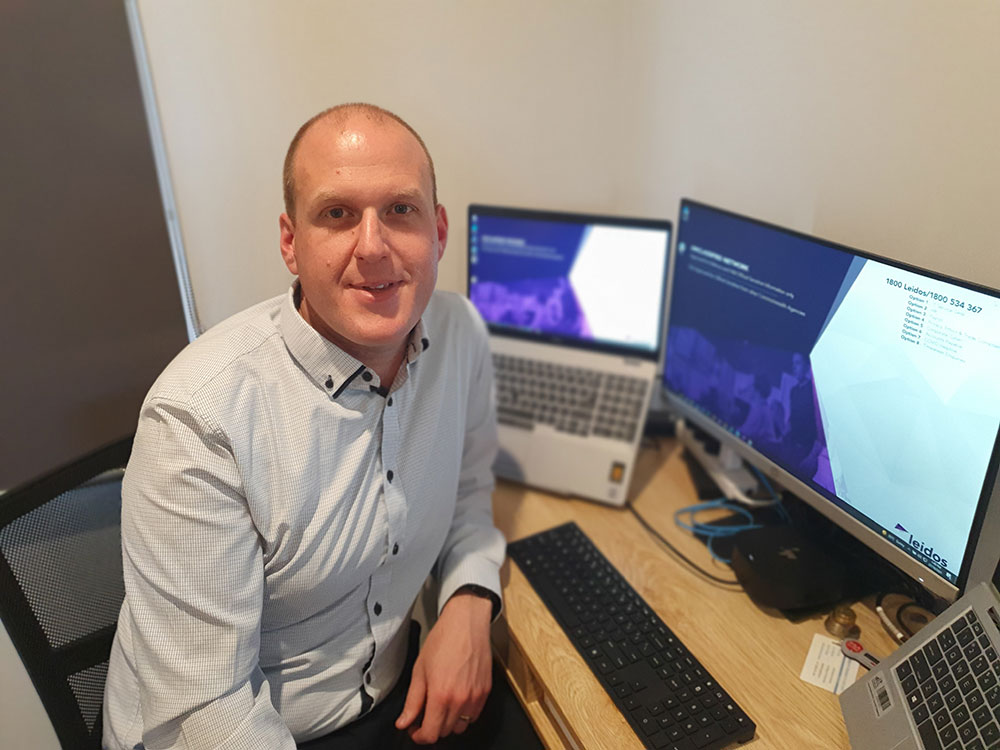A program implemented across Leidos Australia is supporting its employees to become Chartered Professional Engineers. It will benefit the business, its government clients and the broader engineering sector.
Three times in the past Andrew Hurst CPEng attempted to earn his Engineers Australia Chartership. Three times he “put it into the too-hard basket”. As Verification and Validation Engineering Lead at government IT, intelligence and defence specialist Leidos Australia, his life was busy, challenging and interesting enough already.
Then Leidos Australia launched a program to have some of its most experienced engineers earn their Engineers Australia credentials. A few weeks before Hurst spoke with create, he finally earned his Chartered Professional Engineer status. The difference this time was that he had the support of his employer.

“I’m very proud, personally, because it represents a recognition of qualifications, experience and learning that is meaningful across industries and sectors,” Hurst said. “That recognition is rewarding.”
It also benefits the organisation and its customers.
“We’re often bidding for work, so I can very much see how having Chartered engineers in the organisation helps us to offer a lower risk profile for our clients,” he said.
Leidos Australia’s major clients include the Department of Defence, the Australian Taxation Office and the Bureau of Meteorology. In terms of defence alone, Leidos supports about 70,000 users domestically and globally, including troops in the field and at sea.
“Chartership has a direct impact on the work we do and the people we support,” Hurst said. “I can see the real value to the company.”
Attracting and retaining great engineers
Over the last five years headcount has risen more than 100 per cent, said Leidos Australia’s VP Human Resources Ali McPheat. In the business, which now employs 1500 people in Australia, engineers represent 32 per cent of staff.
“We’re very much a people business and we’re growing rapidly,” McPheat told create. “We’ve got a huge pipeline of work and we know that to attract and retain great people, we need to develop them.
“One of our scorecard goals is to be a great place to work. One of our top drivers behind that goal is career development.”
When engineers choose to join the business because of its reputation, when they value their roles and therefore want to remain, that fundamental commitment encourages high performance, McPheat said.
“The Chartership program adds to our value proposition. It adds to the attractiveness and competitiveness of our offering in a very tight market. We want an unfair share of diverse talent, and this will certainly help,” she said.
Hurst agreed. “I became a Chartered Professional Engineer only because of the support that came from the business,” he said.
“With the company’s assistance it became achievable. They cover the financial side, too. All up, I really do think it gives me greater drive in my work.”
Meet the mastermind
The idea behind credentialing a large portion of the Leidos Australia workforce came from the company’s Chief Engineer, Jim Harvey.
“There wasn’t a single purpose behind the idea,” Harvey said. “There were a lot of contributing factors. Part of it was improving our employee value proposition. Anything that helps make people feel more included and valued is useful.
“It also helps from a compliance and risk perspective. By virtue of using Chartered engineers, we lower the risk profile of the programs we deliver. That is good for us as a business and good for the customer and the confidence they feel in knowing Chartered Professional Engineers are looking after their projects.”
Finally, Harvey said, it’s a great development activity for the company’s engineers. It helps them grow, learn and become better at what they do.
“I’m already noticing a greater sense of energy from some of the engineers that are now Chartered,” he said.
“But what it also does is give us the ability to say, ‘Okay, we’ve got a mechanical engineering problem we need solved. We know we’ve got a chartered mechanical engineer on board.’ I can tap them in the first instance.”
What happens when the initial group of engineers are credentialled? Does the program end?
“I don’t think so,” McPheat said. “It’s an excellent program and I think it will simply continue. It’s just one element of our engagement, development and support program, but it’s a very important piece. It adds great value, so the investment and focus will remain.”